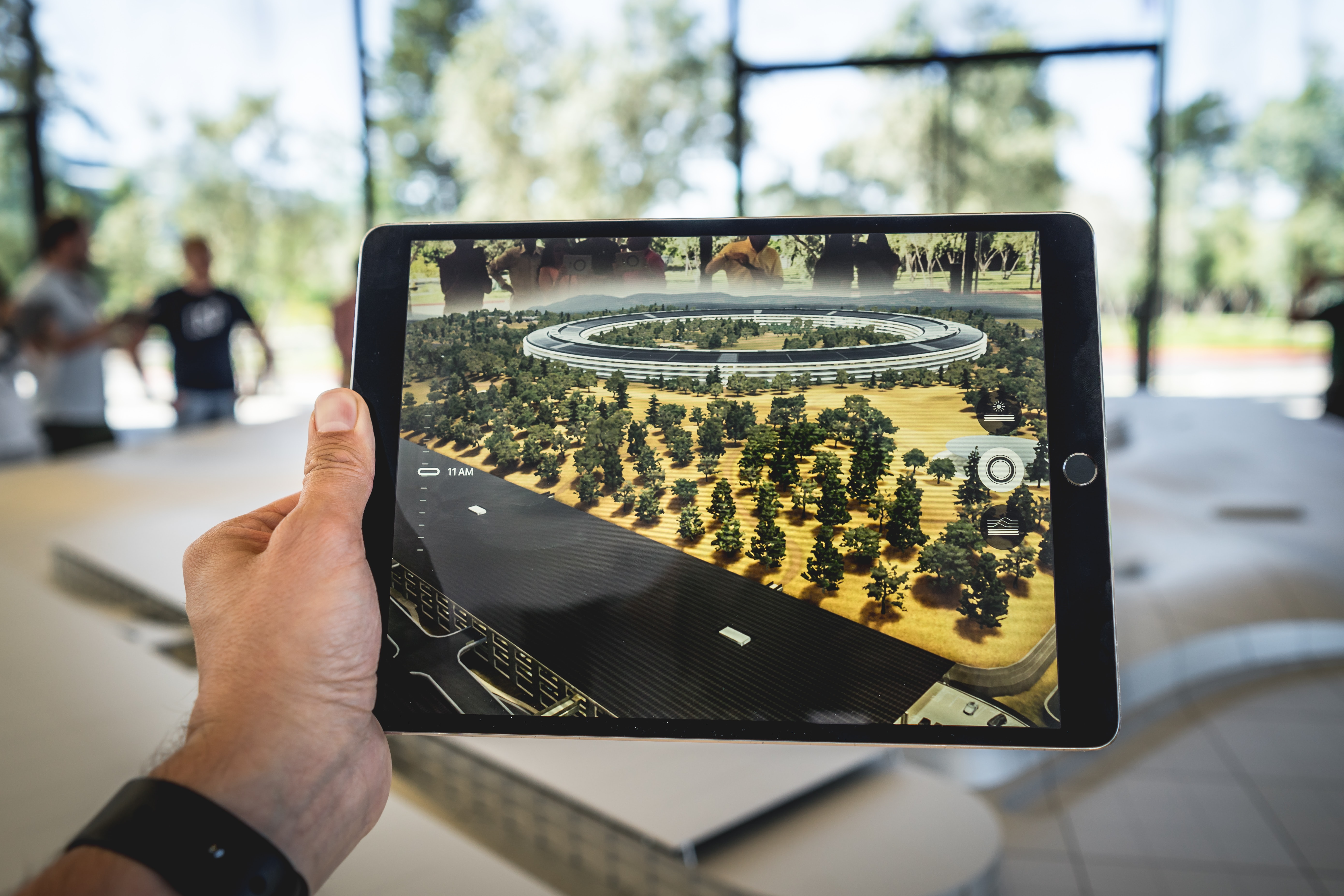What is AR visualization?
Augmented reality (AR) visualization refers to the manipulation of 3D rendered objects to be experienced virtually in a user’s environment. In contrast to virtual reality (VR), which seeks to fully immerse users in a virtual environment, AR combines the user’s perception of their real-world environment with visuals that appear to take up space in that environment. This allows users to interact with 3D models to fully conceptualize what a product might look like and how it might behave in the real world.
Product engineers and designers use AR visualization software to upload and edit 3D models of their products and curate the best virtual user experience possible. Often, designers can scan real-world products to upload a ready-made 3D model of it into their AR development environment.
Types of AR visualization
There are four main kinds of AR visualization.
- Marker-based visualization: This type of AR visualization relies on real-world object detection in a camera view to serve as reference points for virtual information to appear on-screen. For example, an end user might use an app to view products on a show floor through their phone’s camera and see product descriptions and other visuals pop up next to objects when relevant objects are recognized.
- Markerless visualization: Markerless visualization refers to a type of AR visualization that does not rely on real-world objects to display a 3D object in a fixed space on the user’s screen.
- Projection-based visualization: This type of AR visualization projects light to create what are essentially holograms in the real world, rather than relying on an on-screen camera view of the real world.
- Superimposed visualization: This type of AR visualization is popular for product visualization. It combines real-world and virtual visuals to create the effect that virtual objects are overlaid onto the user’s environment.
Benefits of AR visualization
While AR visualization is an evolving technology, its benefits are already being realized by e-commerce companies. Some of these benefits include:
- Remote product demos: AR visualization allows end users to conceptualize how a product works in the real world without actually interacting with it. This benefits companies by allowing them to host product demonstrations remotely.
- Efficiency: Many AR visualization tools allow users to import existing 3D models or scan real-world objects to create already made models of those objects. This saves time for teams and enables them to get their AR solutions up and running more quickly.
- Marketing: AR visualization can be used to display immersive marketing information and visuals as potential customers browse through products. For example, AR visualization allows potential customers to see what a piece of furniture might actually look like in their living room.
Basic elements of AR visualization
While there are different types of AR visualization, as mentioned above, and it is an evolving space, most AR visualization endeavors will include similar basic elements. These include:
- Object or environment detection: One of the basic elements of AR visualization is object and environment detection because AR visualization relies on merging the real world with virtual objects. Except for markerless AR, most AR visualization tools include systems to automatically detect and map real-world environments. These tools then constantly track the objects and surfaces in that environment, even as the end user’s camera angle changes, to ensure that the imposed virtual objects appear fixed in space.
- Integration with a viewing device: Whether an AR visualization tool is used for projection-based viewing, handheld device viewing, or even headset viewing, it must integrate with hardware and software that allows the visualizations to function.
- Scaling: While AR visualization can range in its 3D modeling capabilities, from thorough editing tools to simple scan-ins, most visualization tools allow users to scale objects to suit their projects. This helps companies ensure that the visual representations of their products in the real world don’t look too big or too small according to actual specifications.
AR visualization vs. VR visualization
While AR visualization is quite similar to virtual reality (VR) visualization software, there are distinct differences between the two that offer unique advantages depending on the desired outcome.
VR visualization refers to completely immersive visualization, complete with a fully virtual environment that does not incorporate elements from the real world. At present, VR requires the user to own a headset or similar viewing device so that they can be fully immersed. VR visualization is more immersive than AR visualization, allowing companies to curate experiences more thoroughly than is possible with AR. However, AR is a vastly more accessible technology to end users at this time because it only requires a software-supporting handheld device with a camera, such as a smartphone or tablet.

Adam Crivello
Adam is a research analyst focused on dev software. He started at G2 in July 2019 and leverages his background in comedy writing and coding to provide engaging, informative research content while building his software expertise. In his free time he enjoys cooking, playing video games, writing and performing comedy, and avoiding sports talk.





